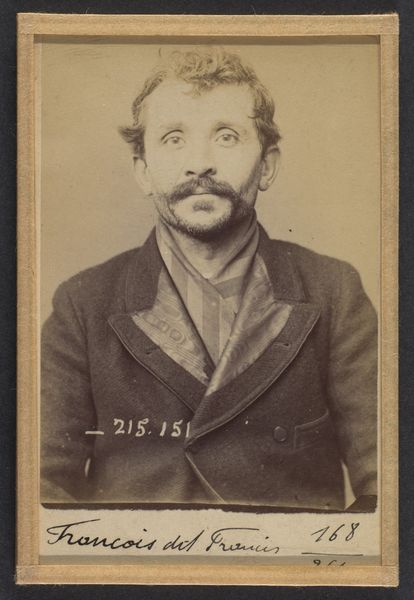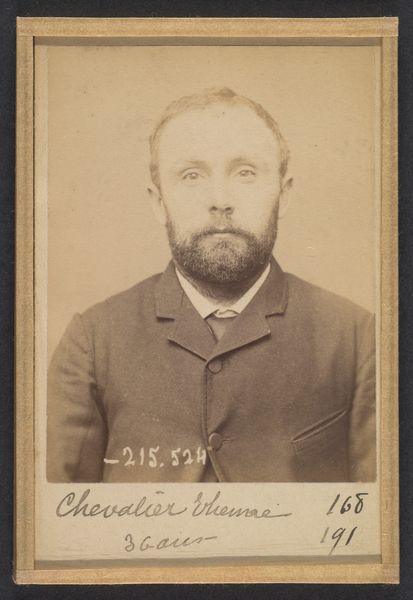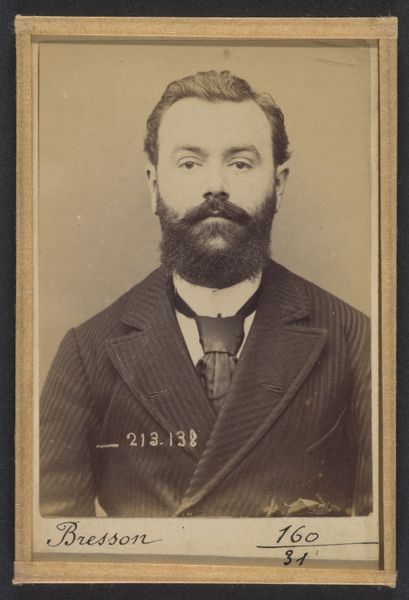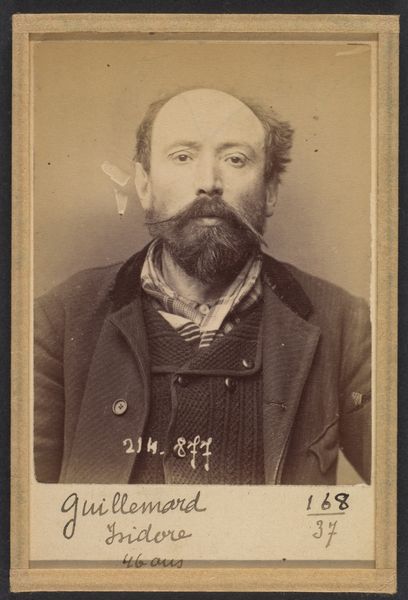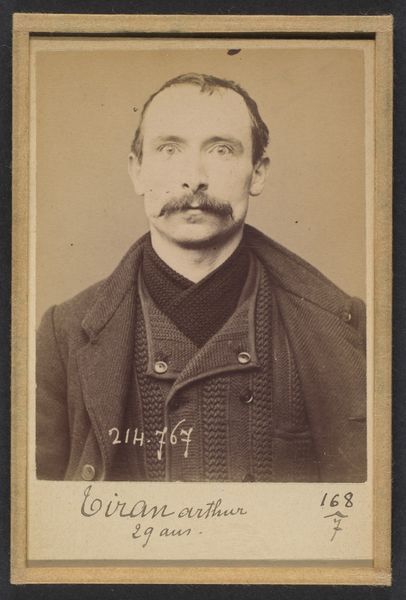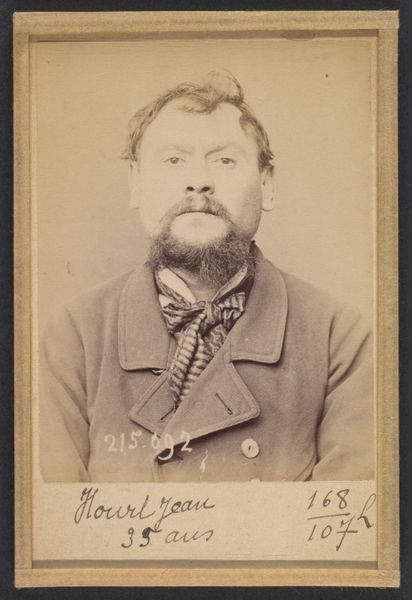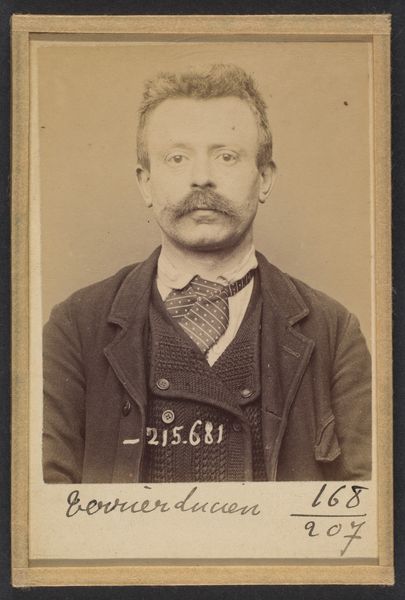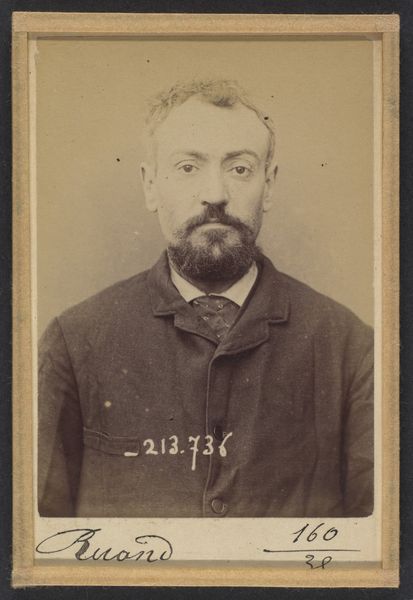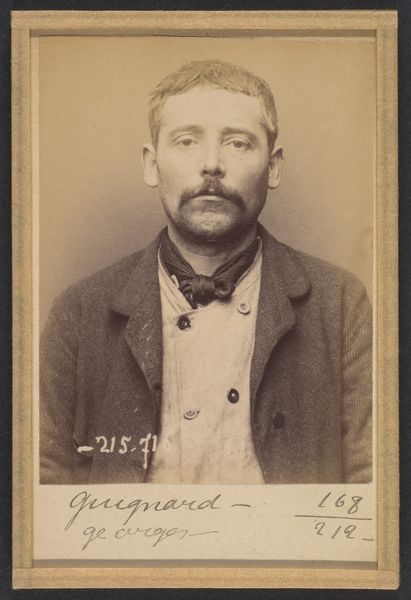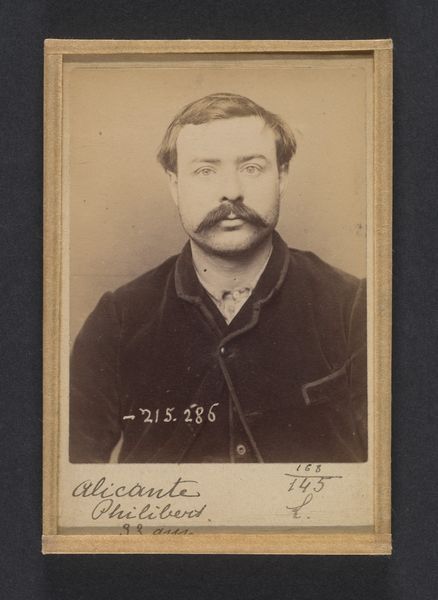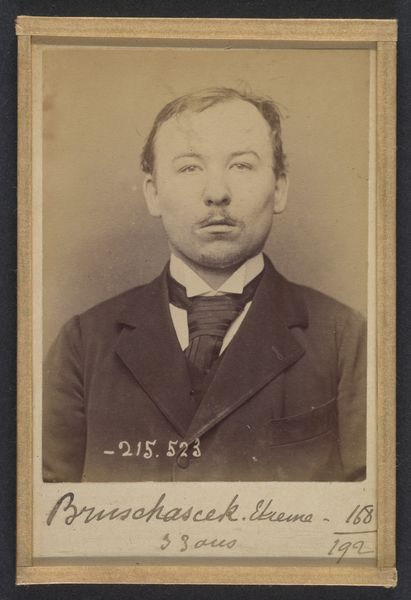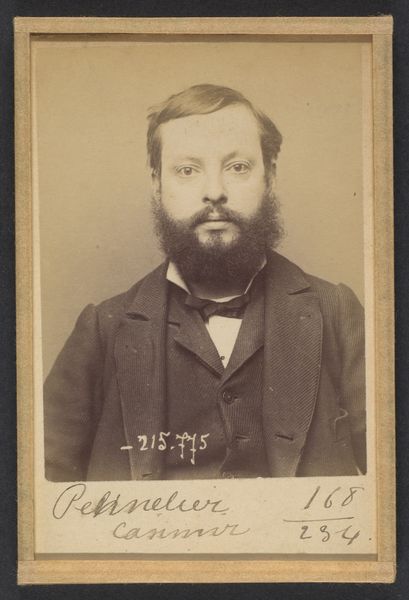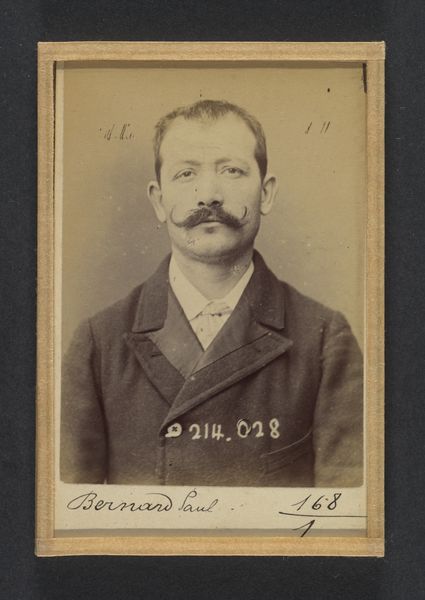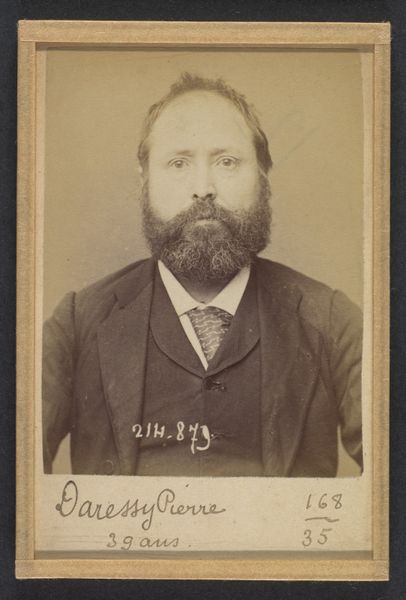
Etiévant. Henri, Achille. 32 ans, né à Flammanville (Manche). Typographe. Anarchiste. 4/3/94. 1894
0:00
0:00
daguerreotype, photography, gelatin-silver-print
#
portrait
#
african-art
#
daguerreotype
#
photography
#
photojournalism
#
gelatin-silver-print
#
men
#
realism
Dimensions: 10.5 x 7 x 0.5 cm (4 1/8 x 2 3/4 x 3/16 in.) each
Copyright: Public Domain
Editor: We’re looking at a photograph from 1894 by Alphonse Bertillon. It's titled "Etiévant. Henri, Achille. 32 ans, né à Flammanville (Manche). Typographe. Anarchiste. 4/3/94." It's a gelatin silver print. I’m struck by how the texture and light create a sense of starkness, almost like a mugshot. What do you see in this piece from a formalist perspective? Curator: Focusing solely on its intrinsic visual elements, observe the photograph’s formal composition. Note the subject's central placement. How does this frontality affect your viewing experience? The even, almost clinical lighting, desaturates the colour, focusing attention on the interplay of light and shadow that define the man's features. Do you perceive how this illuminates and perhaps also flattens the depth of field? Editor: Yes, it almost feels like he's presented as a specimen. The contrast enhances every line and contour. But why would a formalist perspective matter in photojournalism? Curator: It is not necessarily photojournalism. What is more pertinent, is to regard this photograph not as merely a document but as a constructed image with specific formal properties. It bears some of the properties of a portrait, yet avoids their conventions. In semiotic terms, the formal elements create their own signifiers irrespective of denotative elements of the subject, like their occupation and social position as denoted in the title, and thereby encourage varied interpretations beyond surface readings. Editor: That’s fascinating. It shifts the emphasis from 'what' he is to 'how' he’s represented, letting the formal qualities speak for themselves. Thanks! Curator: Precisely. It serves to remember to value our immediate reading and look closer at what forms of information a portrait is really delivering. Thank you, my perception has now shifted as well.
Comments
No comments
Be the first to comment and join the conversation on the ultimate creative platform.
